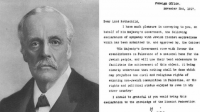
Links
Sheba Medical Centre
Melanie Phillips
Shariah Finance Watch
Australian Islamist Monitor - MultiFaith
West Australian Friends of Israel
Why Israel is at war
Lozowick Blog
NeoZionoid The NeoZionoiZeoN blog
Blank pages of the age
Silent Runnings
Jewish Issues watchdog
Discover more about Israel advocacy
Zionists the creation of Israel
Dissecting the Left
Paula says
Perspectives on Israel - Zionists
Zionism & Israel Information Center
Zionism educational seminars
Christian dhimmitude
Forum on Mideast
Israel Blog - documents terror war against Israelis
Zionism on the web
RECOMMENDED: newsback News discussion community
RSS Feed software from CarP
International law, Arab-Israeli conflict
Think-Israel
The Big Lies
Shmloozing with terrorists
IDF ON YOUTUBE
Israel's contributions to the world
MEMRI
Mark Durie Blog
The latest good news from Israel...new inventions, cures, advances.
support defenders of Israel
The Gaza War 2014
The 2014 Gaza Conflict Factual and Legal Aspects
To get maximum benefit from the ICJS website Register now. Select the topics which interest you.
Possible school closure reflects Jews’ flight from European cities
On the third floor of the Belgian capital’s oldest Jewish school, Jacquy Wajc pauses to listen to the eerie silence that hangs in the hallways.
Established in 1947 as a testament to Belgian Jewry’s post-Holocaust revival, the Athenee Maimonides Bruxelles school once accommodated 600 students in its spacious building in downtown Brussels, but now has only 150. Enrollment entered a free fall 10 years ago, as Jews left the area for the suburbs and were replaced by immigrants, many of them Muslims, who made Jewish parents believe the area was unsafe.
“It breaks my heart,” says Wajc (pronounced “vights”), president of the Maimonides school. “I remember when you couldn’t hear a thing this time of the day over the raucous PE class.”
As anti-Semitic attacks spiked during the second Palestinian intifada in the early 2000s, parents who themselves were proud Maimonides alumni enrolled their children elsewhere, citing security concerns. With fewer students, the school went massively into debt; Maimonides now owes various government bodies a total of $8 million.
This year, Maimonides’ staff has stepped up efforts to find an alternative locale in the suburbs. If the bid fails, the school may shut down later this year, Wajc said — a development that would complete the silent exodus of Jews from central Brussels.
A school with a storied history has come to look more like a top-secret military facility than a place for learning
“The story of Maimonides is the story of Brussels’ Jewish community and its growing unease in the city,” said Joel Rubinfeld, a Maimonides alumnus and co-chairman of the Brussels-based European Jewish Parliament.
It’s not only Brussels. Across Europe, Jews have quietly abandoned long-inhabited neighborhoods in central urban areas for remote suburbs.
Unlike in the United States, where the Jewish flight to the suburbs often was part of a larger migration of the affluent from increasingly crime-ridden inner cities, in Europe, the wealthier urban precincts are typically the more central ones. But in a number of cities, neighborhoods once teeming with Jewish life have become no-go zones for Jews — especially if they wear a yarmulke.
The Jewish population of 80,000 in Marseille, France, has almost completely cleared out of the heavily Muslim city center it inhabited until the 1980s. Similar migrations have taken place in another French city, Lyon, as well as in Amsterdam and even Antwerp — home to one of the last European Jewish communities to live and work almost exclusively in an urban center.
“It’s not happening everywhere, but is happening in France, Belgium and Holland,” said Dina Porat, head of Tel Aviv University’s Kantor Center for the Study of Contemporary European Jewry. “Some leave to improve their quality of living; others because they feel unsafe as Muslims move in. For some. It’s a combination of both.”
Since the second intifada began, attacks against Jews have more or less doubled in France, Spain and the Benelux nations, where a total of 600,000 Jews live. Between 2009 and 2011, the Belgian government agency that monitors anti-Semitism recorded an average of 82 incidents a year, double the level recorded between 2002 and 2004. Most of the incidents occurred in Brussels.

Kids participate in a physical education class at Maimonides, whose potential base of students is limited by its acceptance only of halachically Jewish pupils. (Cnaan Liphshiz via JTA)
“Walking with a kippah is unsafe in many other European cities,” Rubinfeld said.
Even before the slaying last year by a Muslim extremist of three Jewish children and a rabbi at a Jewish school in France, security was very tight around Maimonides, Wajc said. Since then, the police have beefed up their presence outside the school, an 80,000-square-foot complex that looks more like a top-secret military facility than a school.
Maimonides has no windows, and its exterior is fitted with armor plating. Its massive metal doors have no markings. The entrance leads to an inspection zone where security guards and cameras welcome arrivals from behind bulletproof glass.
Such intensive measures weren’t necessary in 1945, when Seligman Bamberger, an educator who survived the Holocaust, first laid the groundwork for what would become Maimonides.
“He placed a table and a chair on the platform of the Gare du Midi train station and asked random children if they were Jewish,” Wajc recounts.
Within two years, Bamberger had attracted 100 children whom he taught in a local community center. The school was established formally in 1947 at its current address near the train station.
The area used to be “the ideal location” for a Jewish school, Wajc says, because of the approximately 100 Jewish families who lived nearby and sold produce in the commercial area. Dozens hung on until the early 1990s, but now only three Jewish families remain, he says.
A Holocaust survivor laid the groundwork for the school by approaching potential Jewish students at a train station
As their children and businesses grew, the Jews of the station area began moving to the greener and more affluent suburbs of Forest and Uccle, says Rubinfeld, the former president of the CCOJB umbrella organization representing Belgium’s 20,000 French-speaking Jews.
Two additional Jewish schools opened to accommodate the new arrivals: Ganenou, the largest, with about 600 students, and the smaller Beth Aviv. Both schools teach in French, while Maimonides teaches its Francophone pupils in Flemish from the third grade on — an approach that is important for bridging the cultural divide between the country’s Flemish speakers and its French-speaking Wallonians, Rubinfeld says.
Meanwhile, Arab immigrants gradually took the place of the departed Jews. Today, the area around Gare du Midi is considered unsafe, especially after dark.
“The area has an immigrant population that doesn’t have a very favorable attitude to Jews,” said Agnes Bensimon, an employee of the Israeli Embassy in Brussels and a former member of the Maimonides parents association. “On top of that, it’s just like any other poor urban area.”
During the second intifada, assailants attacked Bensimon’s son, Nethanel, in the metro station. Similar attacks were carried out against a number of other Maimonides students. The school responded by instructing students to disembark at a more distant station and walk the distance to school.
Location and language are not the only differences between Maimonides and Brussels’ other Jewish schools. Maimonides does not accept pupils who are not Jewish according to halachah, Jewish law. With Belgian Jewry’s estimated 40 percent intermarriage rate, this further diminishes the population of potential students.
“The assimilation makes me very uncertain about the future 35 years from now,” Wajc said. “But here and now, it means we’re not competing with the other schools as we appeal to parents with different sensibilities. Only a few years ago, there were enough of them.
“They will once again send their kids to us — if we get out of here in time.”
# reads: 264
Original piece is http://www.timesofisrael.com/possible-school-closure-reflects-jews-flight-from-european-cities/





















